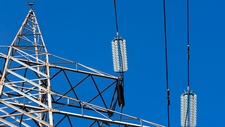Conductors and Insulators

TEKS Objective
The student is expected to differentiate between conductors and insulators.
Essential Understanding
The student knows that energy exists in many forms and can be observed in cycles, patterns, and systems.
Science Background
Conduction: Houston PBS (website) - Explanation of electrical conduction.
Conduction
Houston PBS, www.pbs.org
Conductors and Insulators: NDT Resource Center (website) - Interactive tutorial on insulators and conductors.
Conductors and Insulators
NDT Resource Center, www.nde-ed.org
Conductors and Insulators: The Physics Classroom (website) - Detailed explanation of how different objects behave in the presence of electricity. A brief assessment at the end of the article allows teachers to test their own (or their students’) understanding of the concepts presented.
Conductors and Insulators
The Physics Classroom, www.physicsclassroom.com
Signature Lesson
Testing Electrical Conductivity: TeacherVision(website) – Students investigate Electrical Conductivity.
- Supporting Lessons
- Extensions
- Assessment Ideas
- Literature Connections
- Related
TEKS - Additional Resources
Supporting Lessons
Conductors and Insulators: University of Houston (website) - Texas standards-based investigation for testing conductors and insulators.
Elaboration Lessons and Extensions
Electricity: The Tech Museum (website) - Activities on conductors, insulators and other topics related to electricity, with interactive animations and self-checks.
Electricity
The Tech Museum, www.thetech.org
Conductors and Insulators: Galaxy.net (website) - Students build a simple circuit and test the conductivity of various objects.
Assessment Ideas
Provide students with a set of objects, such as aluminum foil, block of wood, sheet of paper, paper clip, etc., and ask them to identify which items will conduct electricity and which ones will not.
Literature Connections
Conductors and Insulators. Oxlade, Chris (ISBN-13: 978-1432956783)
Dear Mr. Henshaw. Cleary, Beverly (ISBN-13: 978-0688024055)
DK Eyewitness Series: Electricity 77. Parker, Steve (ISBN-13: 978-0751361322)
Conductors and Insulators. Royston, Angela (ISBN-13: 978-0431137261)
Additional Resources
Electricity Teaching Resources: Science Zone (website) - Links to online games and activities that teach concepts related to electricity.
Games for Kids: Science Kids (website) - Students learn about electrical circuits as they experiment with conductors and power sources in this fun, interactive activity.
TEKS Navigation
Grade 4
Need Assistance?
If you need help or have a question please use the links below to help resolve your problem.

Comments